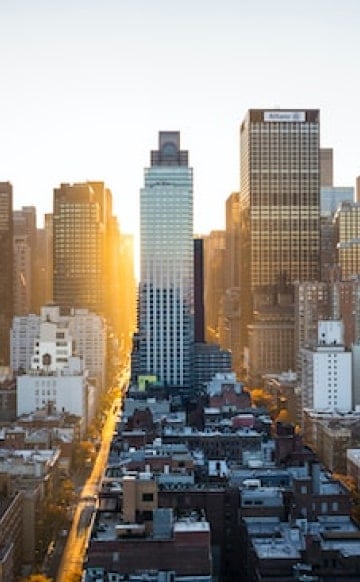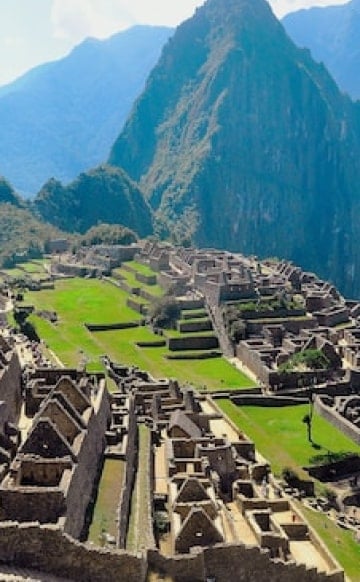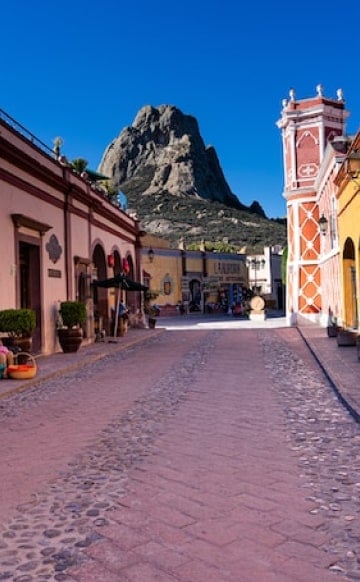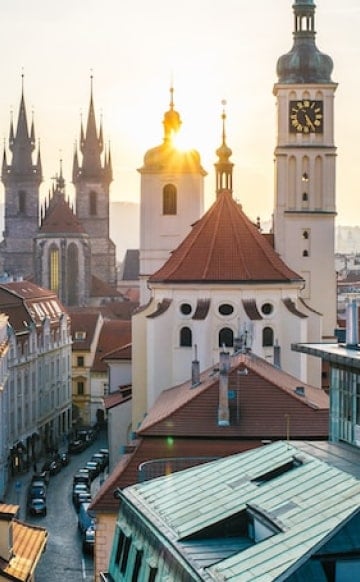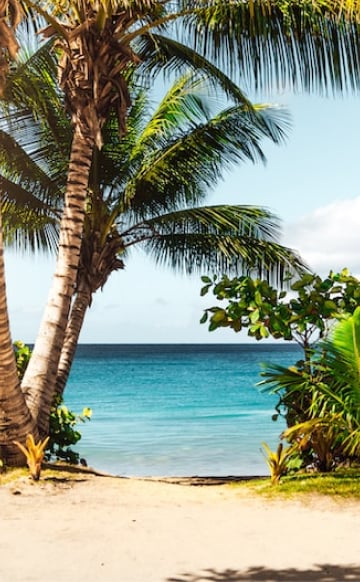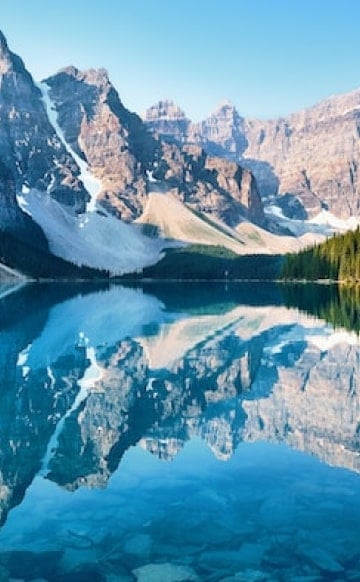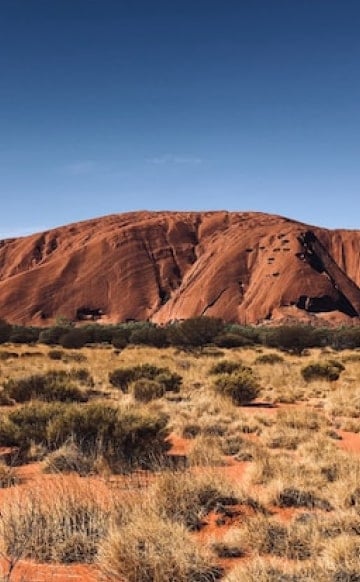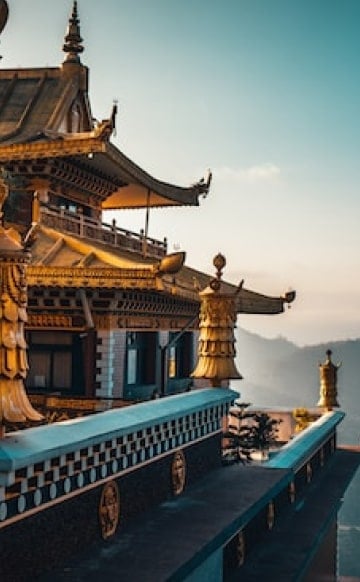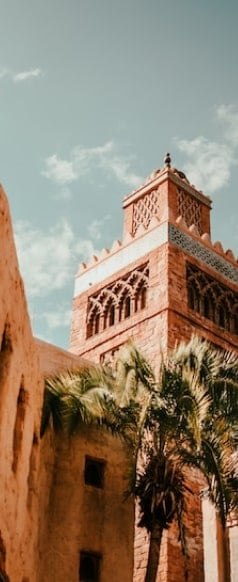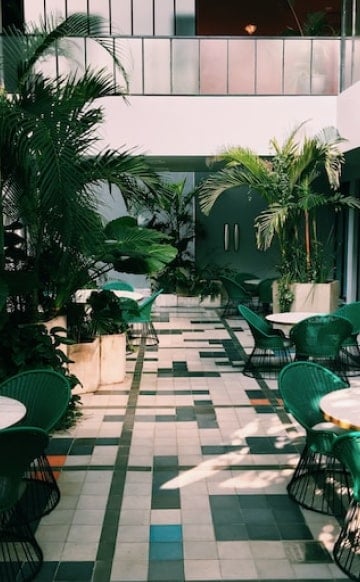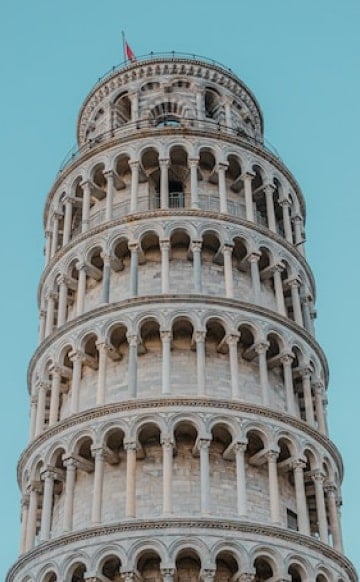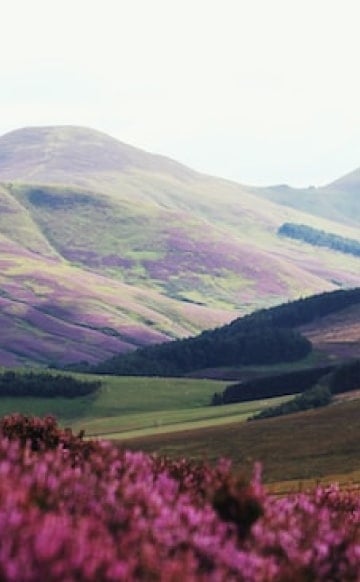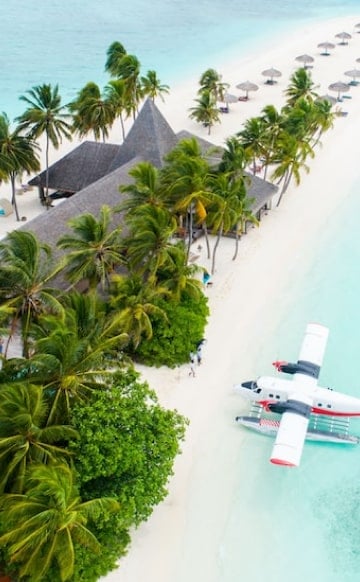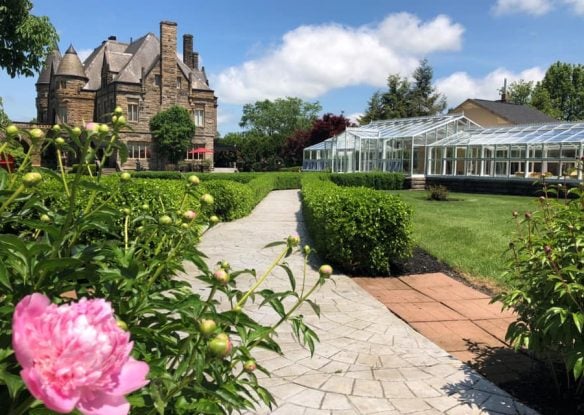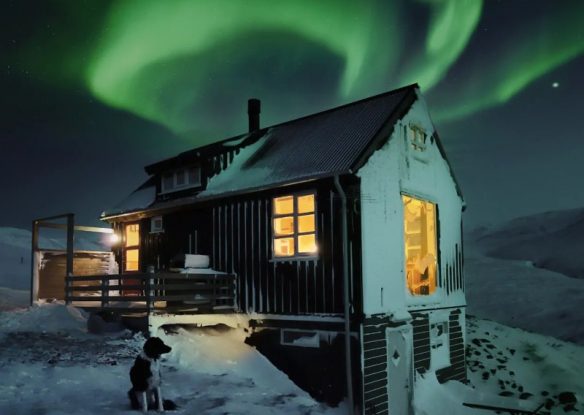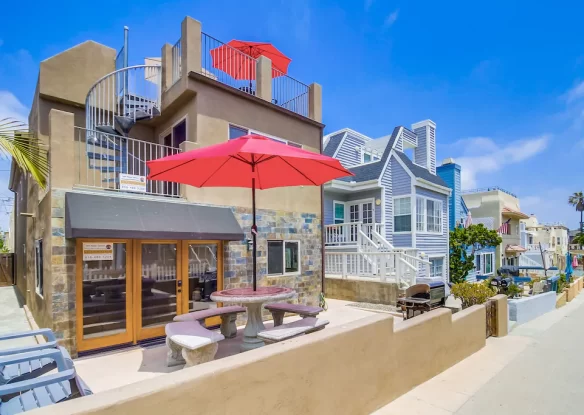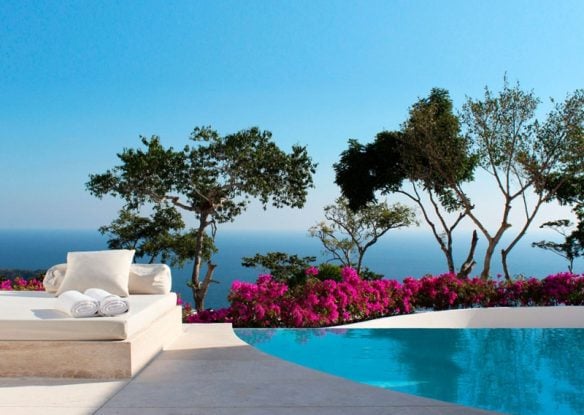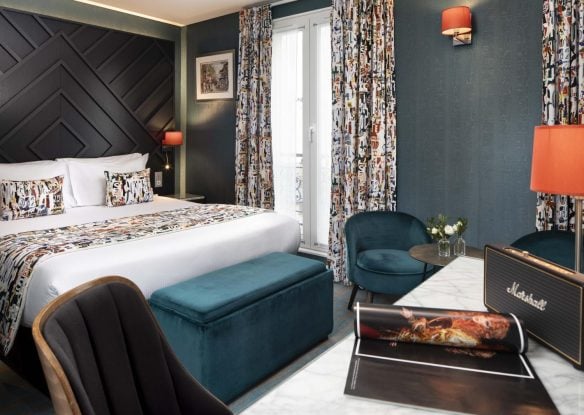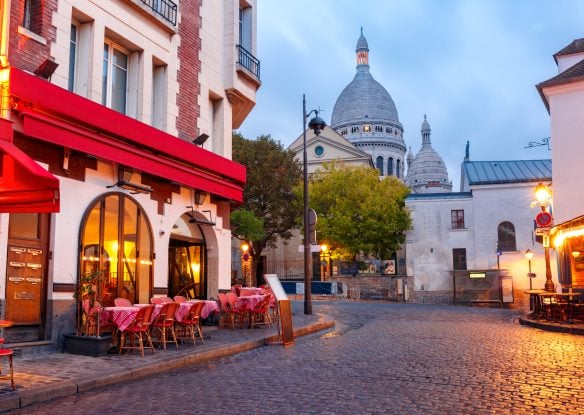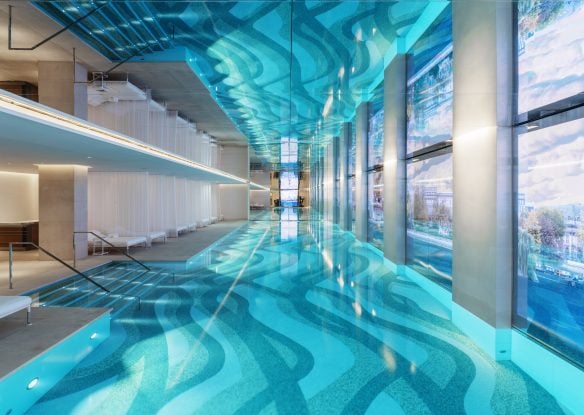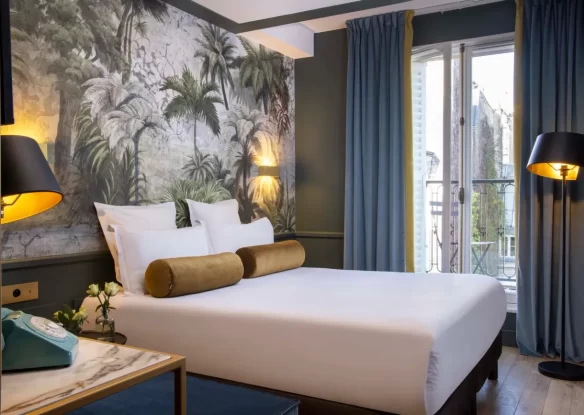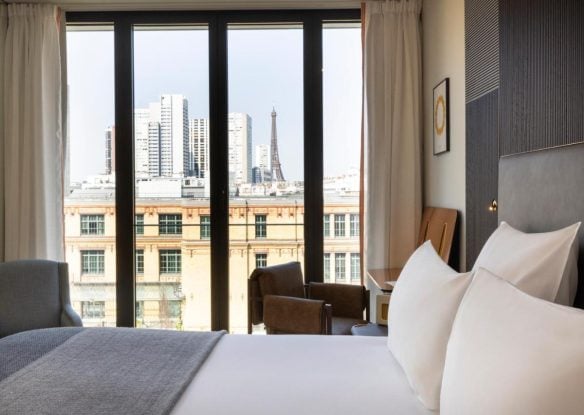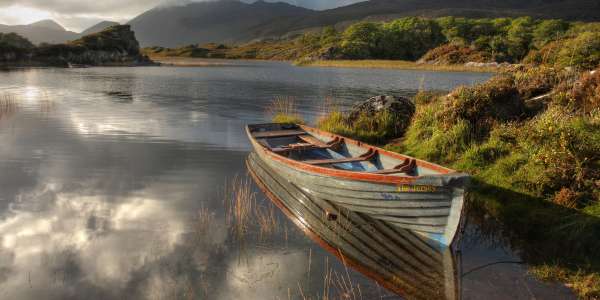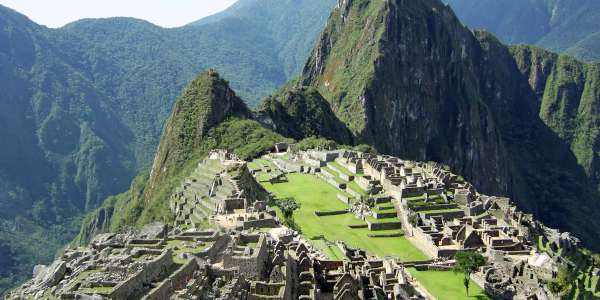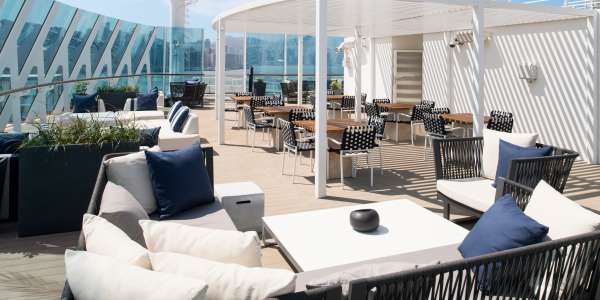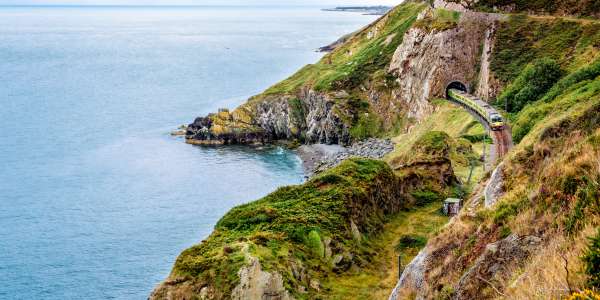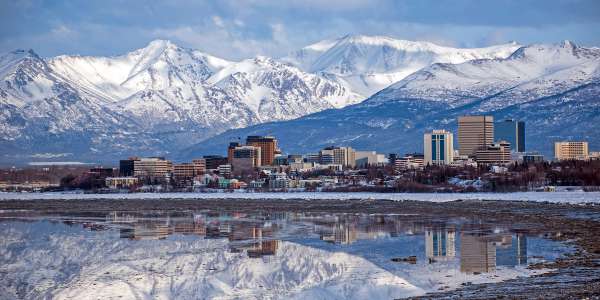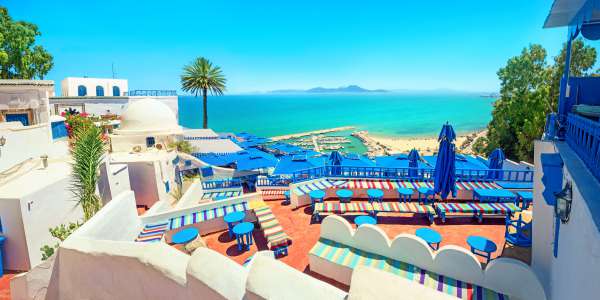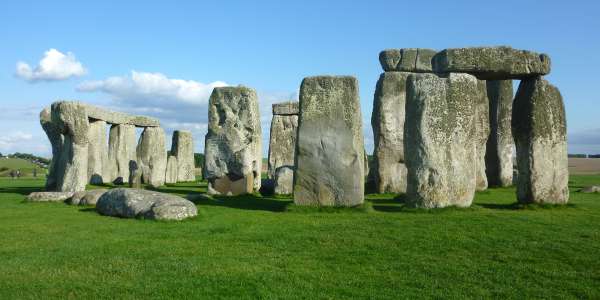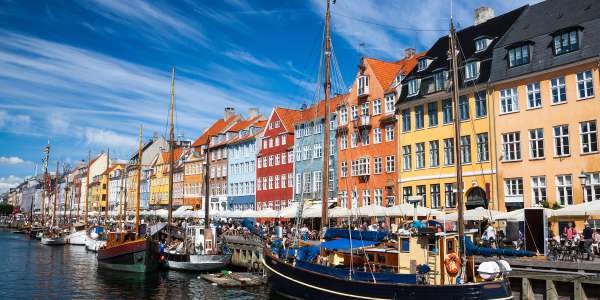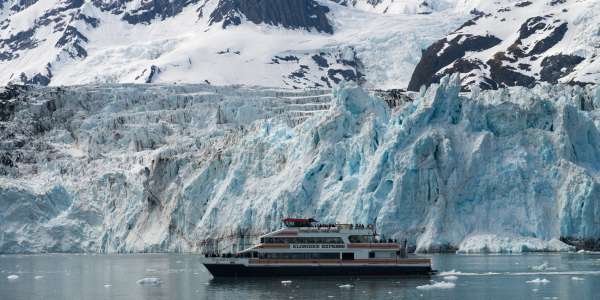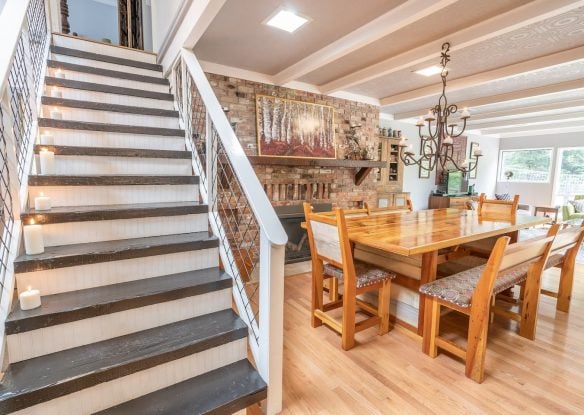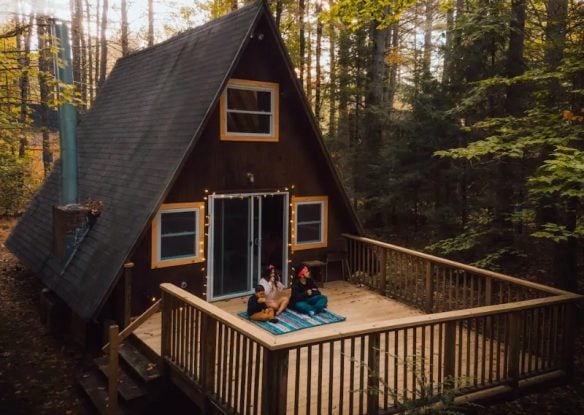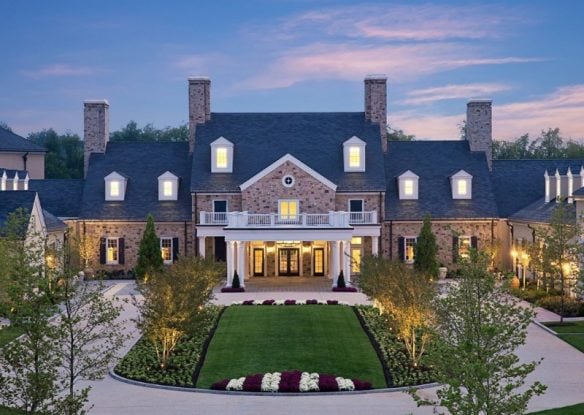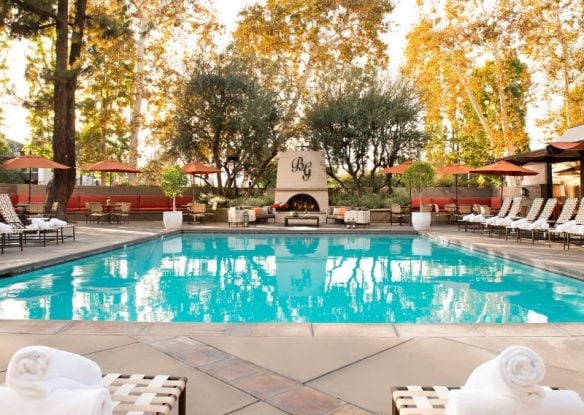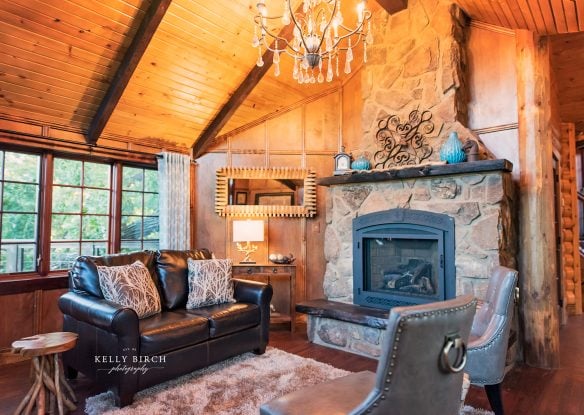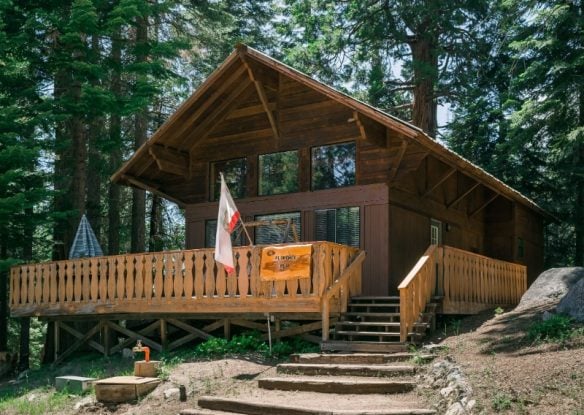France is the world’s most visited country, according to the latest reports. You could easily spend a lifetime or more just seeing the sights in Paris, so when planning your trip, where do you possibly start? These top 21 places to visit in France are sure to help you get that itinerary in place for the time you have allotted.
Are you already picturing your French excursion? Check out these incredible hotels in France.

Mont Saint-Michel
One of the most iconic attractions in France, Mont Saint-Michel is located on a rocky tidal island, which means it’s only an island at high tide. At all times, it’s connected by a causeway to the mainland. One of the most popular day trips from Paris, some three million arrive here annually. The awe-inspiring abbey was built by devoted monks in the early eighth century after the Bishop of Avranches was said to have been visited by the Archangel Michael. At its entrance, is the ancient Burgher’s Guardroom, now serving as a tourist office. Visitors walk through the Boulevard Gate and then the fortified King’s Gate, where the Grand Rue, or main street, is lined with shops, museums and houses that date from the 15th and 16th centuries. If you walk along the mudflats of the bay during low tide, you can get a great photo of the magnificent abbey from afar. It’s especially breathtaking at dusk.

The Island of Corsica
This magical island of Corsica is largely unspoiled, with very little in the way of commercialism. Perfect for those who want to relax, unwind, enjoy beautiful landscapes and all sorts of outdoor activities like hiking, canyoning, rafting and a variety of other water sports. Corsica is also known for its brilliant blue waters that surround it, which are so clear you can easily spot fish swimming around. Its beaches are magnificent too, especially on the south end of the island – and, here, you can even pitch a tent on a picture-perfect, secluded beach before falling asleep to the sounds of the sea.

Gordes
One of the prettiest storybook villages in France, Gordes is a beautiful destination and one of the oldest villages in Provence. Inhabited since Roman times, its buildings that are built right up against the base of the cliffs and perched on the rocks above, include a 12th-century castle and are made of beige-colored stone that glows orange in the morning sun. Watching the sun dip below the horizon across the fields of lavender in the valley is especially unforgettable. While strolling the narrow streets that climb up between the tall houses, you’ll discover beautiful old doorways, arcades and walls of flat stone that have been perfectly restored, and on the other side, the panorama of the valley and mountains of Luberon await.

The French Riviera
Located at the edge of the Mediterranean Sea, the top destinations in the French Riviera are legendary as a playground for the rich and famous. Although it’s renowned for the glitz and glamour of St. Tropez, Monaco and the Cannes Film Festival, there are many other lesser-known destinations, like the perched villages of Eze and Saint-Paul de Vence, for those looking for destinations that are less pretentious and more affordable. The region enjoys a fabulously mild to warm climate all year round, despite being one of the more northerly coasts on the Mediterranean.

D-Day Beaches and More in Normandy
This famous area has played a key role in history from the time William the Conqueror set sail for England in the 11th century, though its best-known moment came in 1944 when the Allies stormed its beaches. While the wide stretches of fine sand of Normandy are quiet today, back then the sounds of gunfire and explosions were a common sound. Near Omaha Beach, the long rows of symmetrical gravestones at the Normandy American Cemetery & Memorial bear solemn, silent testimony to the horrific price paid for the liberation of France from Nazi tyranny. North of the D-Day beaches, which include Omaha as well as Sword, Juno, Gold and Utah beaches, the coastal town of Etretat on the English Channel in Upper Normandy awaits. This jaw-droppingly beautiful area is famous for the two natural arches that can be seen from the oceanfront boardwalk and its white shingle beach. The 80-mile-long stretch of coastline known as the Alabaster Coast runs between Etretat and Dieppe, and it shares the same geology as England’s better-known “White Cliffs of Dover,” where the sea has carved the same sheer cliffs and rock arches and stacks from the soft chalk rock.

Colmar
One of the top fairytale towns in Europe, Colmar is a storybook village that dates back to the 13th century and is often called “Little Venice,” because of its waterways that wind through medieval streets which host small boats filled with curious tourists. Long ago, the canals were buzzing with fishmongers, tanners and butchers. Colmar is also considered the capital of Alsatian wine, and is well-known for its exquisite aromas that waft through the air, coming from bakeries that serve kugelhopf along with fabulous croissants. Its dreamland of Renaissance homes remains well-preserved as the neighborhoods survived the bombings of World War II, because, some say, the soldiers thought they were just too beautiful to touch.

Paris
Of course, if you’re going to France, Paris is likely the first place you’ll experience. From the first moment you set your eyes on the Eiffel Tower in the distance, you’re sure to be mesmerized. Not only is it home to famous landmarks like the Eiffel Tower, the Louvre, the Seine and the Arc de Triomphe, but each area of the capital seems to have a unique personality. Just whiling away the afternoon at a café, sipping France wine and dining on delectable cheeses as you watch people walk by, or strolling the charming back streets is enjoyable in this place that’s probably the best-known city in the world, even for those who’ve never been.

The Palace and Gardens of Versailles, Versailles
The breathtaking gardens at Versailles, are truly fit for a king, which may be because they were created at the behest of Louis XIV, a monarch known for his love of opulence. No detail was overlooked when it was designed by famous Fresh landscape designer Andre Le Notre in the 17th-century. As the king requested, the gardens truly magnified the glory of his palace, Chateau de Versailles, which is among the most visited sites in the country and one of the most stunning examples of royal residence from the 17th- and 18th-century anyone can experience. It boasts around 2,143 windows, 1,252 fireplaces, 67 staircases and five chapels. One of the many highlights is the Hall of Mirrors, which is made up of 17 arched windows, with each window embellished with 21 individual mirrors. Considered to be Louis XIV’s best contributions to the Palace, historically it was also where the Treaty of Versailles was signed in 1919 to end the Second World War. Many feel the gardens are the best feature of all, its 250 acres are filled with winding paths that lead to flower beds, ornamental lakes, quiet corners decorated with statuary and a canal, used by the king himself for gondola rides.

Conques
This picturesque medieval village is nestled high in the hills of Southern France in the Doudou Valley. Made up of rustic stone-built and timber-framed houses roofed with limestone slates, its main attraction is the Romanesque Abbey of Saint Foy, named after a 4th-century martyr whose remains were held here until they were stolen by a monk some 500 years later. The abbey, which was founded in 819 AD when the area was uninhabited and provided isolation for prayer and meditation, is the only medieval shrine on the pilgrimage route to Santiago de Compostela that still survives intact. The Treasury of Conques is also not-to-be-missed, with its extraordinary statue-reliquary “Majesty of St-Foy” as well as numerous other reliquaries that date from Carolingian times to the 19th century. In this village that’s been called one of the greatest in all of southwest France, parts of its medieval walls still survive, along with three of its gates. The homes date from the late Middle Ages and are divided by cobbled lanes and stairways.

Loire Valley
Many travelers consider the Loire Valley to represent quintessential France. The region is well-regarded for its picturesque vineyards, historic villages, glorious chateaus and spectacular scenery. Stretching 175 miles along the Loire River, its highlight is Chateau de Chambord, which features more than 400 rooms, while Chateau Chinon was the spot where during the 100-Year War that Joan of Arc begged the Dauphin to fight the English, Chateau Villandry continues to entrance visitors with its ornamental gardens, and Leonardo da Vinci is buried in the Chateau at Amboise and his former home nearby, Clos Luce, which contains models of some of his inventions. Beyond the chateaus is the largest medieval abbey in France, the Abbaye Royale de Fontevraud, where Richard Lionheart is buried. Of course, the valley is also home to countless wineries that offer tours and wine tastings.

Lyon
Lyon is considered by many to be the gastronomy capital of the world, making it a must for foodies and just about everyone else with an appetite. The city is loaded with high-quality restaurants for all budgets, and of course, being in the heart of the Beaujolais and Cotes du Rhone wine regions, Lyon’s eateries offer a variety of delicious wines too. Beyond the outstanding food and fine wine, are gorgeous churches, Roman ruins and museums. The Musee des Beaux-Arts, Musee d’Art Contemporain de Lyon, Musee des Tissus et des Arts decoratifs de Lyon and Musee Gallo-Romain de Lyon-Fourvière are just a few of the favorites.

Fontainebleau
Fontainebleau is a lovely historical town less than an hour’s drive south of Paris, best known for its scenic Fontainebleau Forest, a popular weekend getaway for Parisians who enjoy hiking, hill climbing, bird watching and bouldering, as the Forest is filled with sandstone boulders. The historical Chateau de Fontainebleau attracts many tourists as one of the most beautiful castles in France. Its interior decorations serve as a fine example of the French Renaissance style, with all of the rooms lavishly painted and decorated, with furniture, sculptures, carpets, paintings, tapestries and ceramics that represent the changing tastes of the monarchs who lived there – and 700 years of monarchs have left their mark.

Eguisheim
Eguisheim is a colorful town surrounded by vineyards and tucked into the lush, green hills of the Alsatian Wine Route, has been ranked as one of the Most Beautiful Villages of France for over a decade now. It’s best known for its unusual concentric-circle layout of its streets along with its multiple cellars and wine bars. But Eguisheim may attract the most visitors because of the fairytale-like experience it offers, causing some to exclaim that the only thing missing is Cinderella. When strolling its narrow, medieval streets lined with half-timbered houses decorated with flowers, be sure to stop in for at least a taste of its very high-quality Alsatian wine

Arles
The former home of master artist Vincent van Gogh, Arles is a Provencal city and place of remote tranquility and jaw-dropping beauty. One of the most popular attractions of Arles is the surviving remnants of Roman architecture, which include a Roman Amphitheater. Today, the large arena serves as a venue for bullfights, festivals and other special events. Other highlights include significant Gallo-Roman structures like the 10th-century Cathedral Saint Trophime, the Classical Theatre, the Obelisk and the Cryptoporticus. Arles is also home to many galleries and museums, like the Musee departmental Arles Antiques, showcasing all of the town’s ancient artifacts, including statues and other Roman objects, mosaics and sarcophagi.

Turenne
Also ranked as one of the “Most Beautiful Villages of France,” Turenne sits atop a limestone cliff with impressive views offered from its highest point at over 1300-feet above the Limousin countryside – on a clear day you can see for 20 miles around, with the mountains, villages, forests and fields making a verdant patchwork of the beautiful landscape. The 13th-century village is filled with picturesque houses, dating mostly from the 15th and 16th century, along with two watchtowers that stand at either end of the hill behind the town. The cobbled streets, burgher houses made from limestone, abundance of towers and turrets, make this little medieval village in the sky an ideal place for exploration, though the hilly paths are steep and the climb to the top cannot be made by vehicle. Visitors have to walk as only cars belonging to Turenne residents may be driven all the way up.

Champagne
Wine and bubbly enthusiasts especially shouldn’t miss the Champagne region, which is home to big Champagne houses like Moet & Chandon, Mumm and Mercier as well as featuring the famous towns of Epernay and Reims. But while the famous international brands demand a fairly high price for a tour of their cellars, there is an increasing number of smaller vignerons that receive visits from the public, and don’t charge for tastings, plus winemakers are also opening their own B&Bs all over the region. The scenic driving routes are the best way to taste fine bubbly amid the rolling vineyards and charming villages – be sure to stop in for a taste at Champagne Tribaut, there is no charge for tasting, and by ringing in advance, they’ll be happy to arrange a tour to explain how champagne is made.

Carcassonne
Hilltop Carcassonne is one of four UNESCO World Heritage Sites in the South of France, and one of the country’s most famous and evocative medieval citadels. At first glimpse of the sturdy, stone turrets that sit above the fortified town, your jaw is sure to drop. The preserved town inside the magnificent walls provides an excellent insight into what life was like during medieval towns. To properly savor this storybook walled city, stick around after the crowds have exited when the old town belongs to its 100 or so residents, and the only tourists left are those who stay at one of a handful of hotels.

Flavigny-Sur-Ozerain
Also on a hilltop, Flavigny-Sur-Ozerain is a picturesque village in Burgundy that has become famous as the setting for the 2000 film starring Johnny Depp, “Chocolate.” It’s not only one of the most charming towns in the country, it’s arguably the best smelling, with the aroma of anise wafting throughout the streets. It showcases gates and fortifications as well as beautiful architecture that’s revealed in small businesses like glassmakers, weavers, tin potters, millers and winemakers as well as the bay windows of ancient shops. Its winding, narrow alleyways are lined with bourgeois residences with gorgeous staircase turrets.

Dune du Pilat
Located at the entrance to Arcachon Bay and near the commune of La Teste de Buch, the Dune du Pilat is a “mountain” that is begging to be climbed. This amazing phenomenon, at more than 1640-feet-wide, nearly two miles long and 351-feet-high, is Europe’s largest sand dune. Taking in the coastal panorama from the top of the dune is unforgettable, with the view including the surrounding forest, Banc d’Arguin bird reserve and Cap Ferret across the bay. If you’re lucky, you might spot bottlenose dolphins and porpoises playing in the water. If you’re into surfing, this is a great place to enjoy the sport as the area beaches are famous for having some of the Atlantic Coast’s best surf.

Claude Monet's Gardens, Giverny
Claude Monet’s lovely Giverny gardens make for a perfect day trip from Paris, located only a little over an hour northwest of the city. Considered by many to be the impressionist painter’s finest legacy, Monet’s dreamy water-lily ponds were said to have provided him with his greatest artistic inspiration and have made this charming Seine-side village one that is celebrated around the world. The artist spent his last, and most creative years, cultivating the garden and his art here at Giverny. While first-time visitors all want to see the bridge and waterlily pond, the rest of the gardens are also beautiful and meticulously maintained. There’s something different to see in every season, from tulips and daffodils in the spring to the dahlias in early autumn. Similar to Monet’s paintings, you’ll see brightly colored, messy, but balanced patches.

Lascaux Caves, Aquitane
At the Lascaux Caves, you can practically step back in time, imagining the people who lived and painted the ancient murals that are estimated to be over 17,000 years old. The actual caves, with the images created so many years ago, are located nearby. But seeing the reproductions, in which the very same materials and techniques were used whenever possible, makes it a very worthwhile experience. There are more than 1,000 paintings in the cave system, mostly of large animals, along with a few images of people, most notably in a sequence that appears to represent a bison hunt. Interestingly, each one includes an auroch, which is an early relative of the ox, now extinct. It’s believed that the animal was considered a sacred beast in prehistoric times. Also curious, is the painting of a creature with two long straight horns, known as the licorne, or unicorn.
